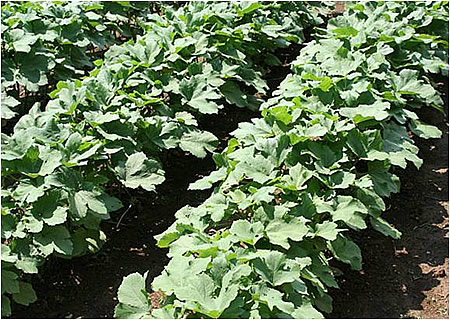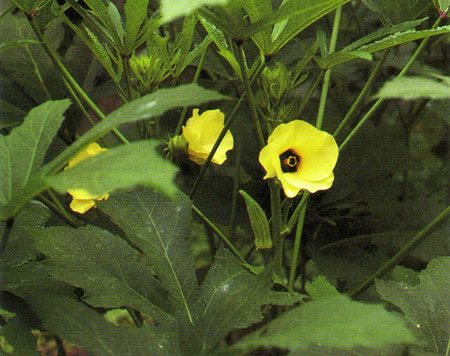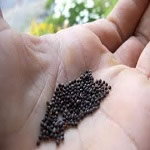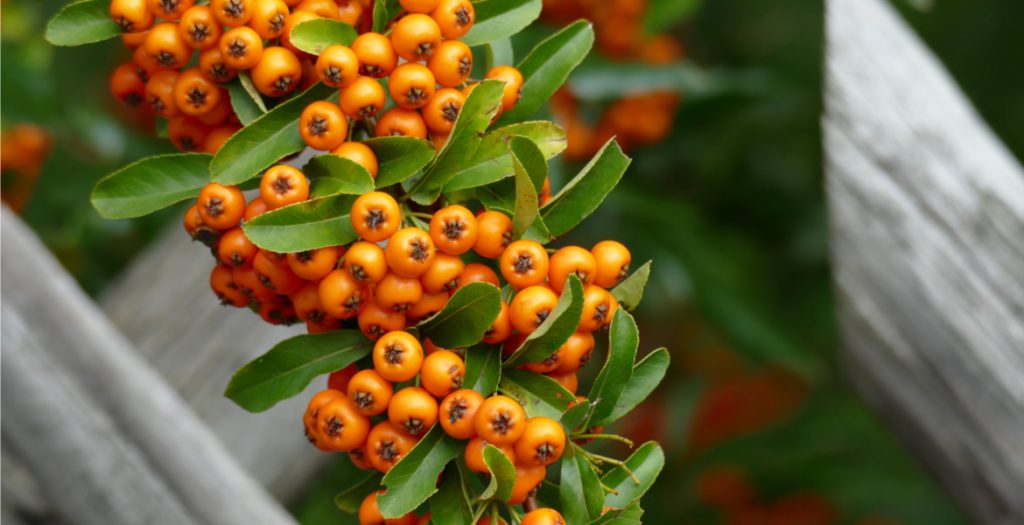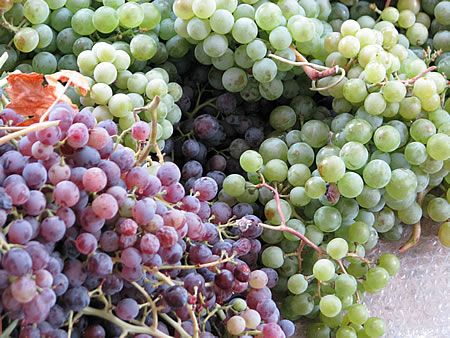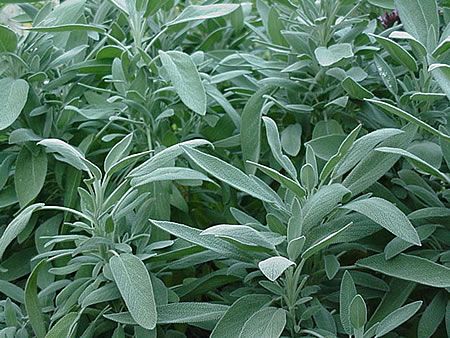Want to learn about growing okra in your garden?
The Latin name of okra is Hibiscus esculentus or Abelmoschus esculentus.
Other English names: Ladies, Fingers, Ochro.
Greek name: Μπάμια (Bamia)
The French name for okra is: Gombo
Okra plants
Okra flower
Okra seeds
Okra plant description
Okra is generally an annual plant and resembles cotton. It belongs to the Malachid family with about 200 species and the name “Bamia” is Arabic. It has a deep root system, the plant is semi-woody, fibrous and reaches a height of 0.5 to 2 m. The leaves are palm-like, round and large, covered with hairs and the flowers are yellow with a purple base. The seed is small, round, hard, grey-black in color. Flowering takes place 35-60 days after seed germination and there is only one flower open on each stem at any one time.
It thrives and is cultivated almost all over Greece but mainly in the regions of Evia, Lamia, Lamia, Trikala, Imathia, Pieria, Serres, Evros and Thessaloniki. In Greece it blooms from early summer until autumn. It is a light and healthy food for humans and is recommended for those with digestive problems. It is a favorite food of the Arab and Ethiopian people and the okra seeds roasted and ground are used for coffee.
Cultivation degree of difficulty
Easy
Okra sowing season
April, May, June
Okra transplanting season
4-6 weeks after sowing
Okra growing tips
Sowing Okra
Okra is a warm season plant, so it does not grow when the soil temperature is low. Sowing should be done when the soil temperature has stabilized at 15 degrees Celsius and depending on the region. Okra seed dehydrates over time, so do not use seed more than 3 years old. The fresher it is, the greater the germination capacity and strength. Before sowing, the area should be disinfected with a suitable fungicide and always according to the instructions. The okra seed is very hard and for it to germinate quickly and normally the soil must be moist. In order to sow it by hand, it needs proving. For 10 square meters, 25-30 grams of seed are needed. The seed is put in lukewarm water, temperature 30 degrees Celsius for 24 hours. If it does not “pop”, leave it in the water for another 24 hours. Once it is established that it has sprouted, it should be planted in moist soil.
Sowing distances
Make furrows spaced 40-50 cm apart and in them pour 2-3 seeds at 20-25 cm intervals, then cover them to a depth of 2-3 cm.
Thinning
After germination and when the plants have reached a height of 4-5 cm, thinning is carried out so that one plant remains in each position on the row. The best developed one must remain.
Staking
Immediately after germination, carving should be done when they reach a height of 2- 3 cm because it has a significant effect on growth. A hoeing in the okra is equivalent to a watering, because hoeing destroys the weeds and thus the plants grow better. Depending on the conditions and the presence of weeds, the hoeing is repeated.
Watering
It is a drought-tolerant plant and depending on the natural composition of the soil, 1-2 irrigations are done every 15 days.
What kind of soil does the okra need?
Okra is grown in light soils, mainly sandy loam, which must be well ploughed in the autumn to retain rainwater and made available to the plants in winter. Such fields are red soil and should be preferred.
Suitable PH is between 6.5 and 7.
The soil surface should be as level as possible and the soil should be finely compacted. A second ploughing before sowing is necessary. If our soil is sloping, it is advisable to make beds where possible, to allow the plants to use the moisture evenly. For the control of weeds preemergence Trifluralin, Treflan and postemergence Chlorthal-dimethyl can be used.
Okra fertilization
The amount and type of fertilizer depends on the fertility of the soil. For a soil of moderate fertility, 150-200 grams of ammonium nitrate, 300-350 grams of dilute superphosphate and 80-100 grams of potassium sulphate can be used in 10 square meters. The quantities of superphosphate and potassium together with 1/3 of the ammonium nitrate are incorporated into the soil by ploughing before sowing. The remaining 2/3 of the ammonium nitrate is applied in surface doses when the plants reach 3-4 cm. A compound fertilizer can also be used, such as 11-15-15 at a rate of 300 grams per 10 sq.m and 8-8-8 at a rate of 1000 grams. Finally, incorporating manure or some other organic fertilizer reduces the use of chemical fertilizer and has better results.
Companion planting okra
Okra can be combined with carrot, cucumber and cauliflower.
Harvesting okra
Okra is considered to be a difficult crop to grow because it is harvested by hand, causing itching and stinging of the hands and eyes. The okra fruit grows very quickly and therefore harvesting should be done regularly every 1-2 days. Harvesting begins when the okra fruit reaches 2-3 cm and continues until the leaves fall in autumn. Regardless of the length, the okra must be tender and not seeded.
Greek okra varieties
Okra-Pylaia: grown mainly in Macedonia. The fruit is pentagonal, thin and small and the leaves are deeply indented. It is preferred by the processing industries.
Bamia-Boyatio: grown mainly in Central Greece. The fruit is small, pentagonal and of good quality. The leaves are large and slightly sticky.
Bamia-B.35: this is a fairly widespread variety and its seed has shown good germination capacity.
Bamia-Beluda: is a variety created after improvement efforts, early and with good seed germination capacity.
Bamia-Kilkisiou: the fruit is deep green in color, fleshy and small.
Bamia-Lassithi: it is widely cultivated in Crete. The fruit is small to medium in size and of good quality.
Bamia-Levadia: a variety of local interest.
Diseases and pests of okra
Dendromycoses
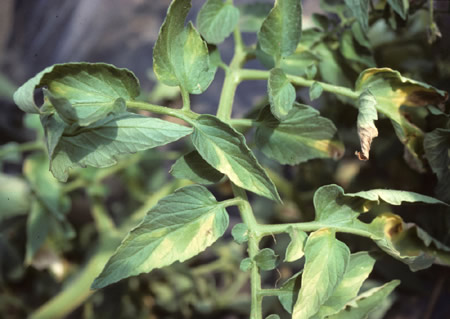
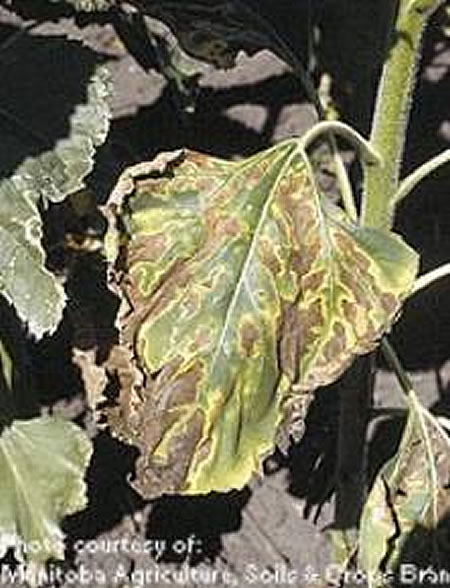
Scientific name: Fusarium, Vertcillium
Type of infestation: Disease
Symptom Appearance: Leaf infestation
Information: It is a soil fungus.
Symptoms: The leaves twist inward and the plant appears stunted.
Pathogen-Growth conditions: The fungus is present in the soil and grows under conditions of excessive moisture. The favorable temperature for the growth of the pathogen is 21 degrees Celsius , so from spring to autumn.
Treatment. Next, remove any affected plants and destroy them. If you can apply a 3-year-4-year rotation in your garden, it greatly reduces the chances of the disease occurring.
Aphids
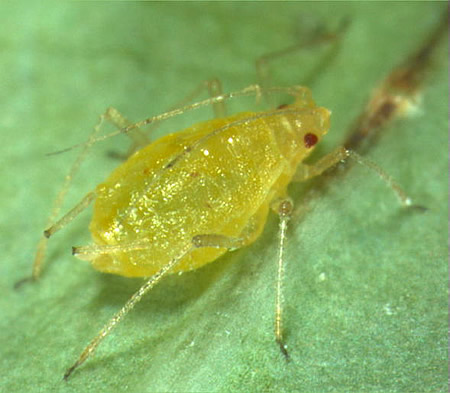
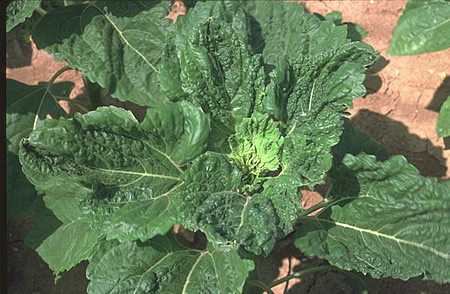
Scientific name: Myzus persicae
Infestation type: Pest
Symptom Appearance: Leaf infestation
Information: Small green-colored insects that grow on the leaves and tops of the plant.
Symptoms: Leaves become deformed and sticky at the infestation sites.
Pathogen-Growth conditions: Beware of excessive nitrogen fertilization because it results in vigorous vegetation growth and thus a greater likelihood of infestation.
Treatment.
Mole cricket or Gryllothalpa or Onion-eater or Pumpkin-eater or Prasangouras or Lakoti (Central Macedonia) or Perchikouras (Eastern Crete)
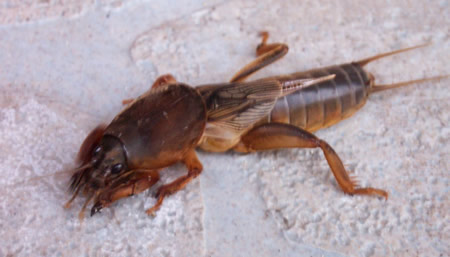
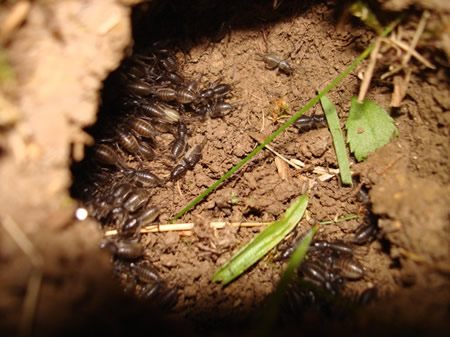
Scientific name: Gryllotalpa gryllotalpa
Type of infestation: Enemy
Symptom appearance: Root infestation
Information: Lives in the soil and feeds on the underground portion of the plant as well as on worms and other insects.
Symptoms: Characteristic underground tunnels and damaged roots.
Treatment: lots of digging and ploughing, tin cans (soda cans) with water up to the waist, a few centimetres below the soil surface and place them at edges and corners. Also oil and mothballs, can’t stand one smell or the other.
Cockchafer or May bug
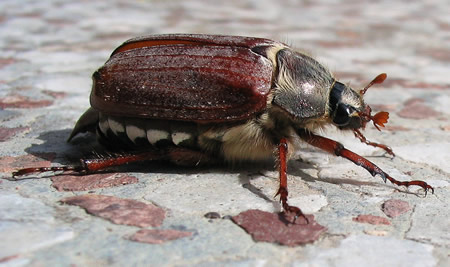
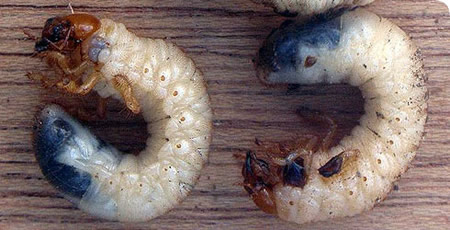
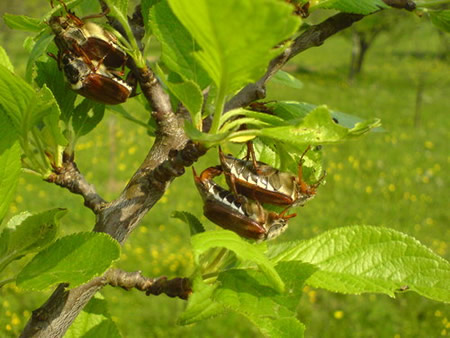
Scientific name: Melolontha melolontha
Type of infestation: Enemy
Symptom appearance: Root infestation, leaves infestation.
Information: Becomes visible in spring and deposits its eggs in clusters below the soil surface. In the evening they gather in masses on the leaves.
Symptoms: Damaged foliage and eaten roots.
Treatment: similar to the onion borer.
Nematodes
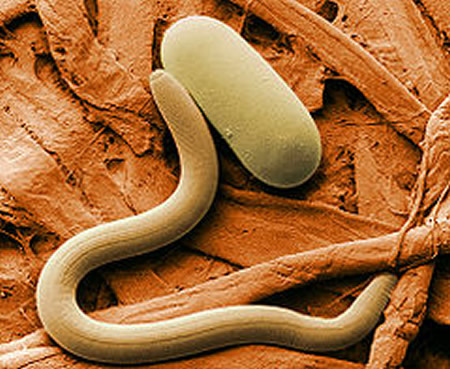
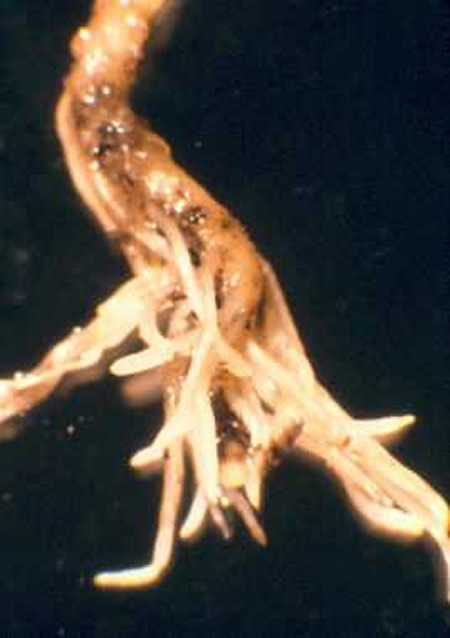
Scientific name: Heterodera sp.
Infestation type: Pest
Symptom appearance: Root infestation.
Information: Infests woody plants, corn, soybeans and some cereals.
Symptoms: Causing bumps and deformities in the roots.
Treatment.
Septoria
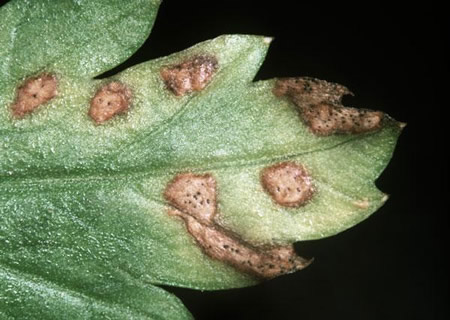
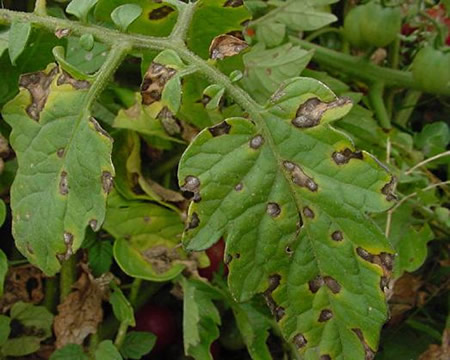
Scientific name: Septoria petroselini
Infestation type: Disease
Symptom Appearance: Leaf attack
Symptoms: Initially chlorotic spots appear on the leaves, which turn brown and die. Black spots appear in the centre of the necrotic spots.
Treatment: Remove the affected leaves, destroy them and spray with copper-based preparations.
Tetranychus
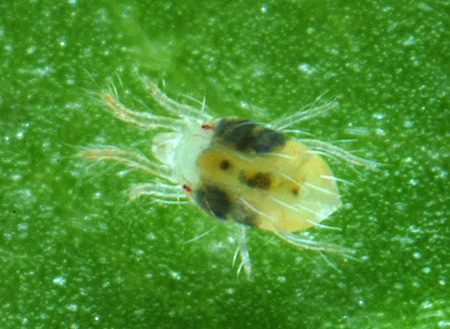
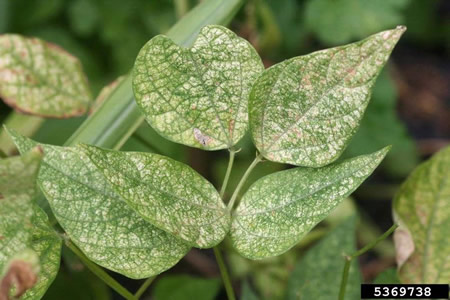
Scientific name: Tetranychus urticae
Type of infestation: Insect/Acarean
Symptom Appearance: Attack on leaves
Information: It is found in the soil and its population increases greatly when the temperature rises.
Symptoms: Leaves turn yellow and eventually dry out. Yellow or red spots can be seen on them.
Treatment: Pressurize the plants to reduce the population, spray with insecticidal soap, and you can use ladybug as a natural enemy. Also, intercropping with dill may reduce the infestation.
Mildew
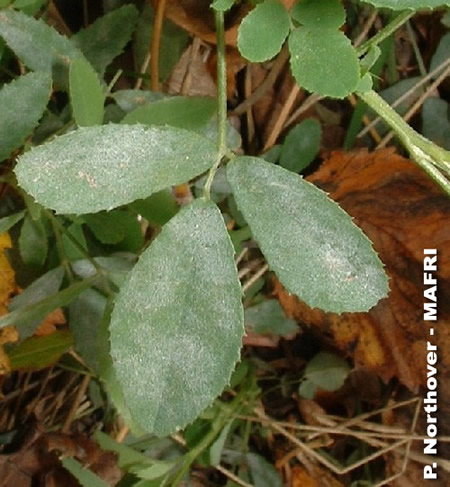
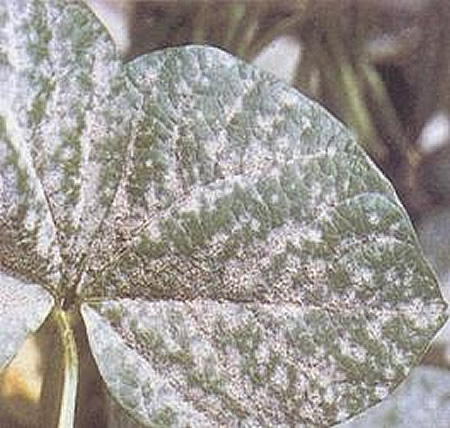
Scientific name: Erysiphe polygoni
Infestation type: Disease
Symptom appearance: Leaf attack
Symptoms: White rash on the upper surface of the leaves.
Treatment: Remove affected leaves and spray with sulphur preparations.
Article by Agronomist Sophia Papazoglou
Agricultural Scientist MSc “Environmental Management”
Tags: CULTIVATE • CULTIVATION • OKRA • OKRAS • SOFIA PAPAZOGLOU AGRONOMIST


